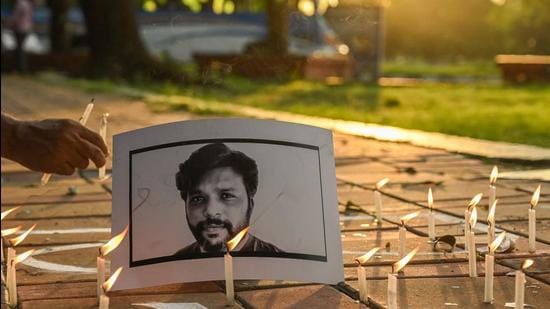Danish Siddiqui’s work mirrored society’s uncomfortable truths
Killed while on assignment in Afghanistan, Pulitzer-awardee Danish Siddiqui photographed unforgettable scenes from the Rohingya crisis in Bangladesh, the CAA protests and the riots in Delhi, and India’s Covid-19 crisis
“I never push my luck to the limit. I always keep a buffer which helps me walk out with the pictures which tell the story,” photojournalist and Pulitzer-awardee Danish Siddiqui told Reuters about his image of a Muslim man being beaten by a mob during the Delhi riots that made it to Reuters’ Pictures of the Year in 2020.

On July 16, 2021, the pictures made their way back to tell the story, but Siddiqui tragically didn’t. He was killed while on a reporting assignment, embedded with Afghan security forces fighting the Taliban in Kandahar.
Over the past few years, but especially in 2020 and then the summer of 2021, Siddiqui photographed some of the most evocative scenes from India’s migrant crisis, the Delhi riots as well as the deadly second wave of Covid-19 in the country. At a time when images are made in millions daily on smartphones, news photography is struggling as a standalone profession and the truth is a hard find in the media, Siddiqui’s work stuck to the rigour of good, old-fashioned photojournalism — tell it as it is.
Perhaps that’s what set him apart from most others in the field. There was no time for snap judgments or biases in Siddiqui’s photographs. His work was a mirror of society’s uncomfortable truths that authorities were forced to notice, and contemporaries forced to admire.
Siddiqui had been working silently for a decade and came into the spotlight in 2018, when he was awarded the Pulitzer along with his colleagues from Reuters for their coverage of the Rohingya crisis in Bangladesh.
On January 30, 2020, his photograph of a teenage shooter, now identified as Ram Bhakt Gopal (as he self-identifies), opening fire at protesters demonstrating against the Citizenship (Amendment) Act or CAA, near Jamia Milia Islamia University in Delhi went viral. It was an unforgettable portrait of blind rage and communal hatred gone out of control. A photograph for the ages, though it didn’t come without its ethical and legal implications since the suspect was allegedly a teenager and the face was blurred/left out in print across a few publications, including this one.
Barely a month later, communal riots broke out in Delhi over the same protests and Siddiqui managed to get into the middle of it again, this time with a gory photograph of a Muslim man bleeding while being ruthlessly attacked by a mob in Delhi. In a talk he gave at the Foreign Correspondents’ Club in New Delhi four days later, Siddiqui spoke of that image, and having been trained to shoot in hostile environments. He had walked away from that scene soon after photographing it to save himself from being attacked.
Soon after, Mohammed Zubair, the man in the photograph, told a national daily that he couldn’t bear to look at that photograph — it made his legs shake in pain. Siddiqui traced Zubair after this account was published and met him again, photographing him a second time as Zubair recuperated at a relative’s home. He tracked Zubair’s recovery in the following days and apologised to him, saying he regretted walking away from the scene without being able to intervene in the unfolding attack.
Amid photojournalism’s serious, unavoidable ethical implications and the questionable afterlife of viral images, Siddiqui attempted to mirror the truth relentlessly, keeping his conscience in check.
Earlier this year, his photographs of hundreds of funeral pyres from the deadly second wave of the Covid-19 crisis in India, where people struggled to procure oxygen cylinders to save their loved ones, made the world sit up and take notice of India’s biggest public health crisis. The publishing of those images of burning pyres was being debated on account of sensitive content, but a time comes when the news photograph finds itself in the line of fire if it threatens to show the uncomfortable truth. Danish Siddiqui lived with that threat — even died for it.
paroma.mukherjee@htlive.com
The views expressed are personal






